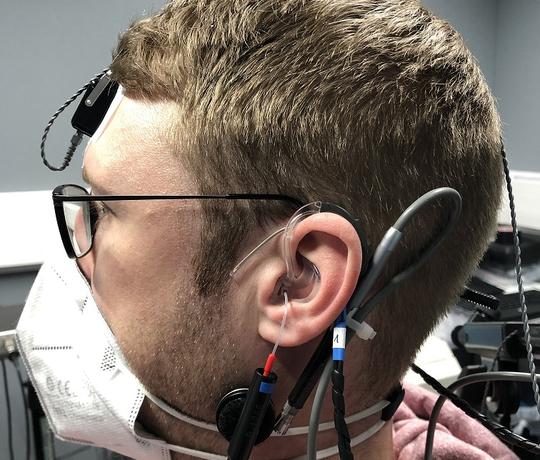Research areas
Overview
The German Institute of Hearing Aids (DHI) conducts research in the areas of measurement technology for hearing devices, acoustics, psychoacoustics and audiology. Besides self-driven research, we are a reliable partner for various research collaborations. This can include contracted research, joint grant proposals or the integration into a research grant as a subcontractor. Within all our research activities, we assure the the neutrality of the DHI remains intact.

Test procedures
Hearing aid features
We develop technical procedures for the verification and evaluation of hearing aid features. As an example, the norm IEC 60118-16 published 2022 is largely based on years of research performed in the DHI. Also, we routinely perform listening tests with subjects on the perceptual effects of hearing aid features.

Studies with subjects
Psychoacoustics with hearing aids
We study the effect of wearing hearing devices on perception. Besides the compensation of hearing loss and benefit of hearing aid features, we are interested in other undesired effects and their origin. One example is the negative effect that wearing "transparent" hearing devices has in normal-hearing users.
Speech and hearing
Audiology
We work on the improvement and standardization of audiological diagnostic procedures. A special focus are speech intelligibility tests. For example, reference curves for the Freiburg monosyllabic speech test in noise are determined at the DHI. Further, we work on extension of the word material for this test procedure.


Beyond acoustic drivers
Novel hearing aid transduction principles
Together with collaborators, we work on novel transduction principles and appropriate measurement technology for hearing aids that may replace and improve air conduction hearing aids. An example is the development of a novel vibro-acoustic coupler for eardrum contact transducers.
University of Lübeck: Auditory Cognition; Institute of Signal Processing
Technische Hochschule Lübeck: Institut für angewandte Naturwissenschaften
University Hostpital Schleswig-Holstein, Campus Lübeck, Clinic of Oto-Laryngology
Medical Laser Center, Lübeck
Jade University of Applied Sciences Oldenburg
University of Southern Denmark, Research Unit of Oto-Laryngology
Vibrosonic GmbH, Mannheim
Bat&Cat Sound Labs, Palo Alto, USA

